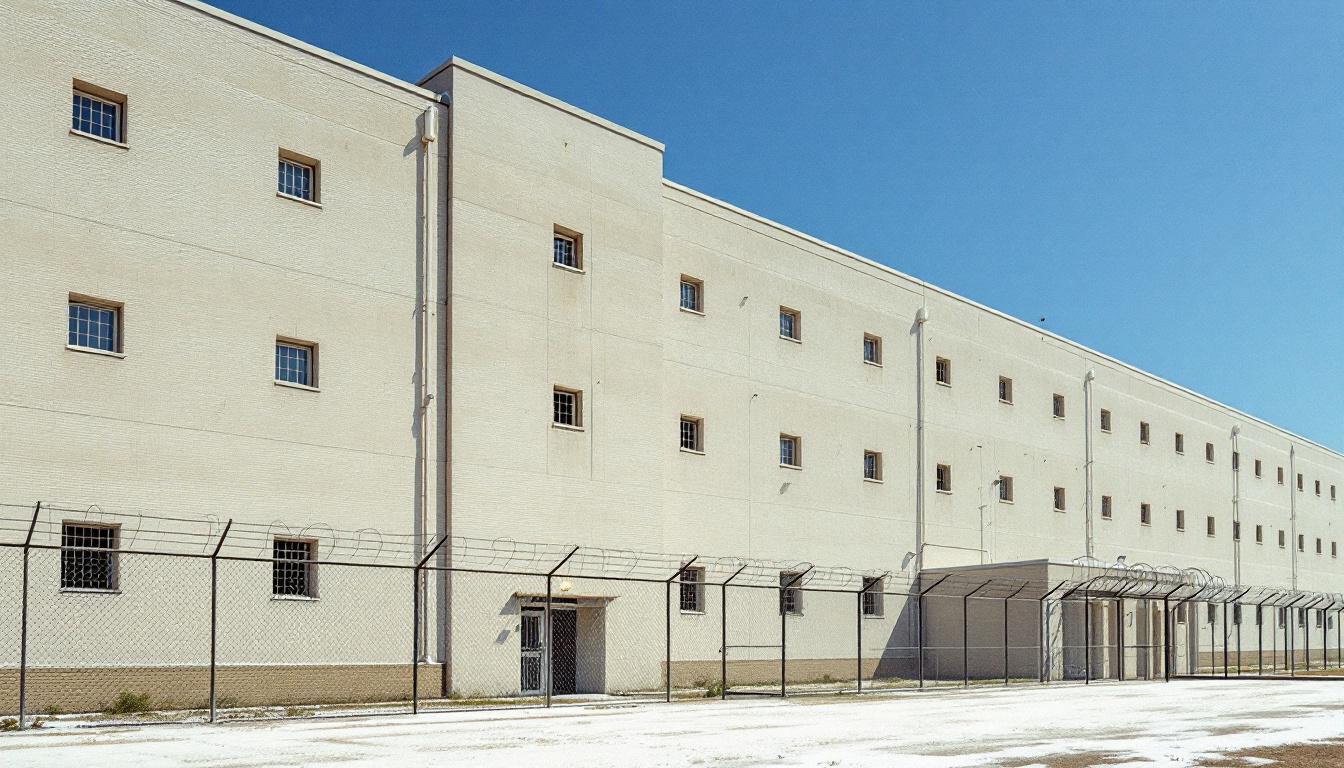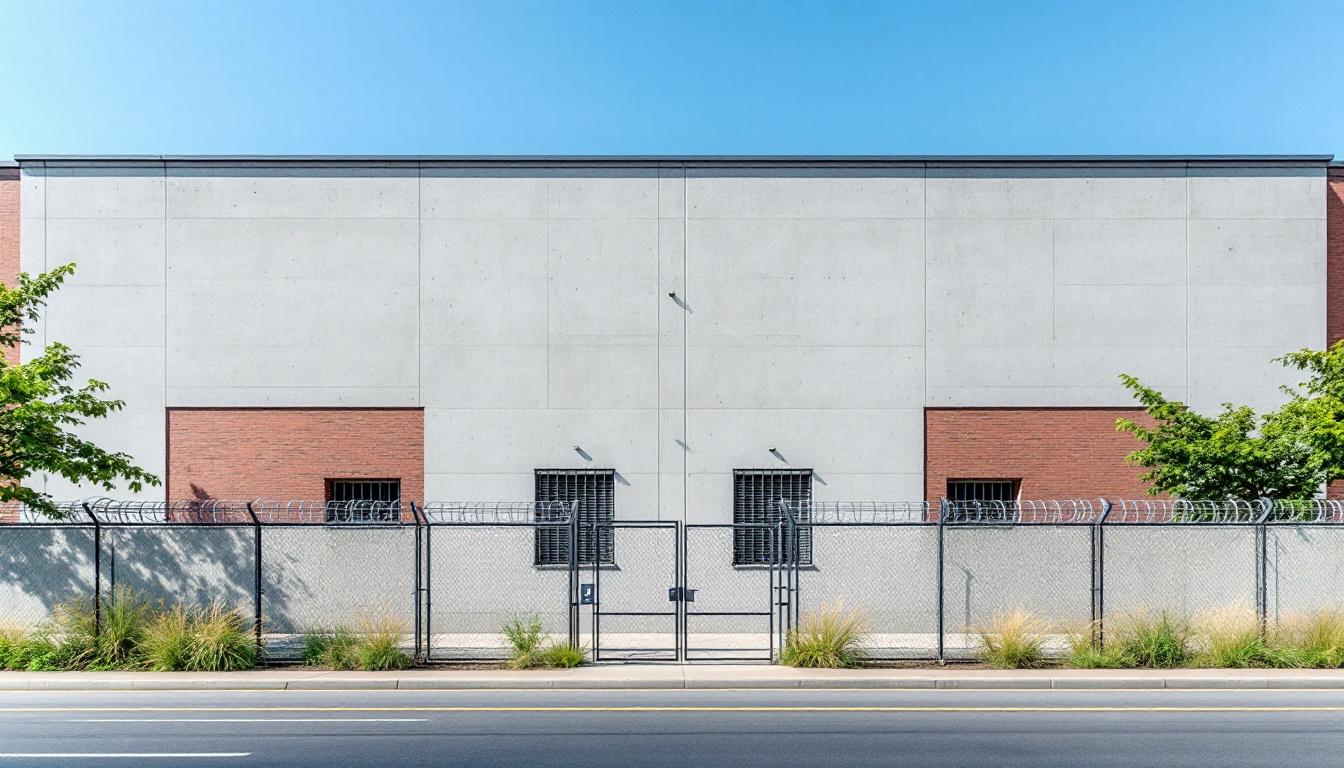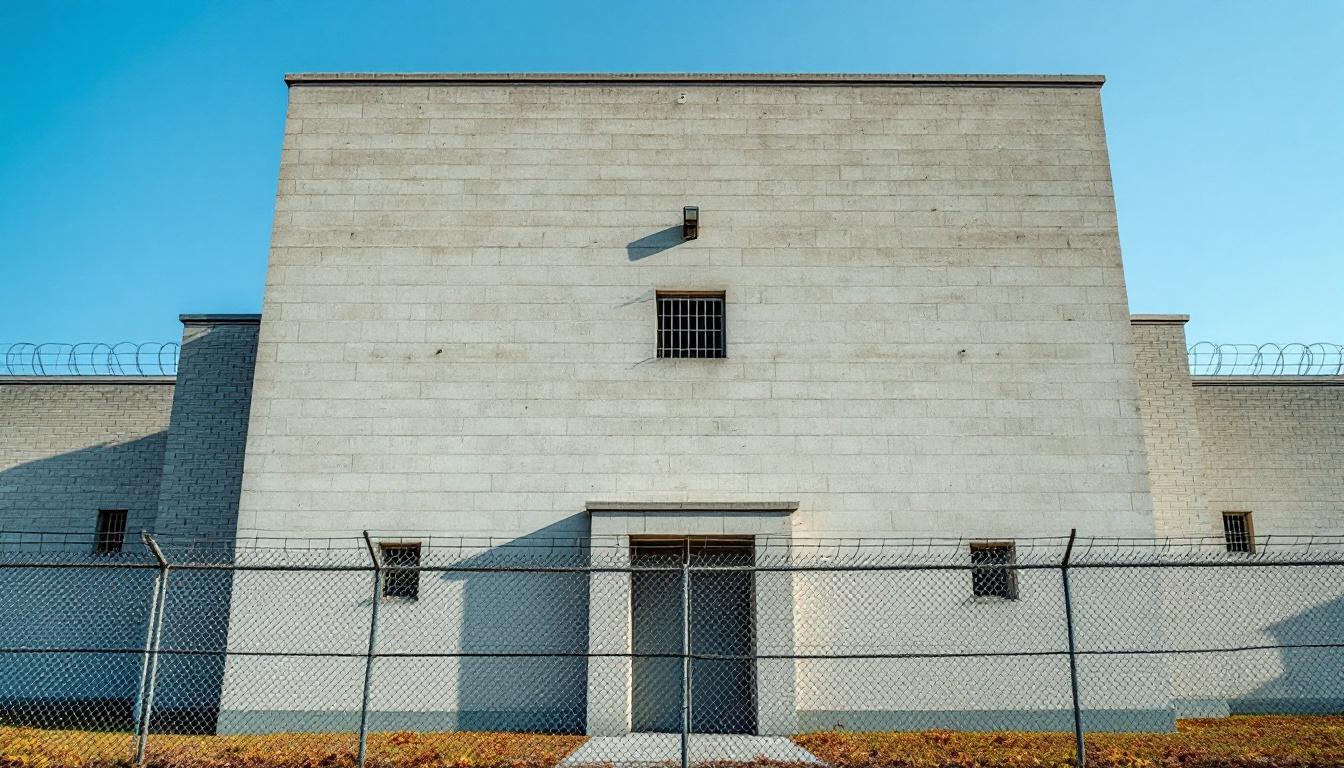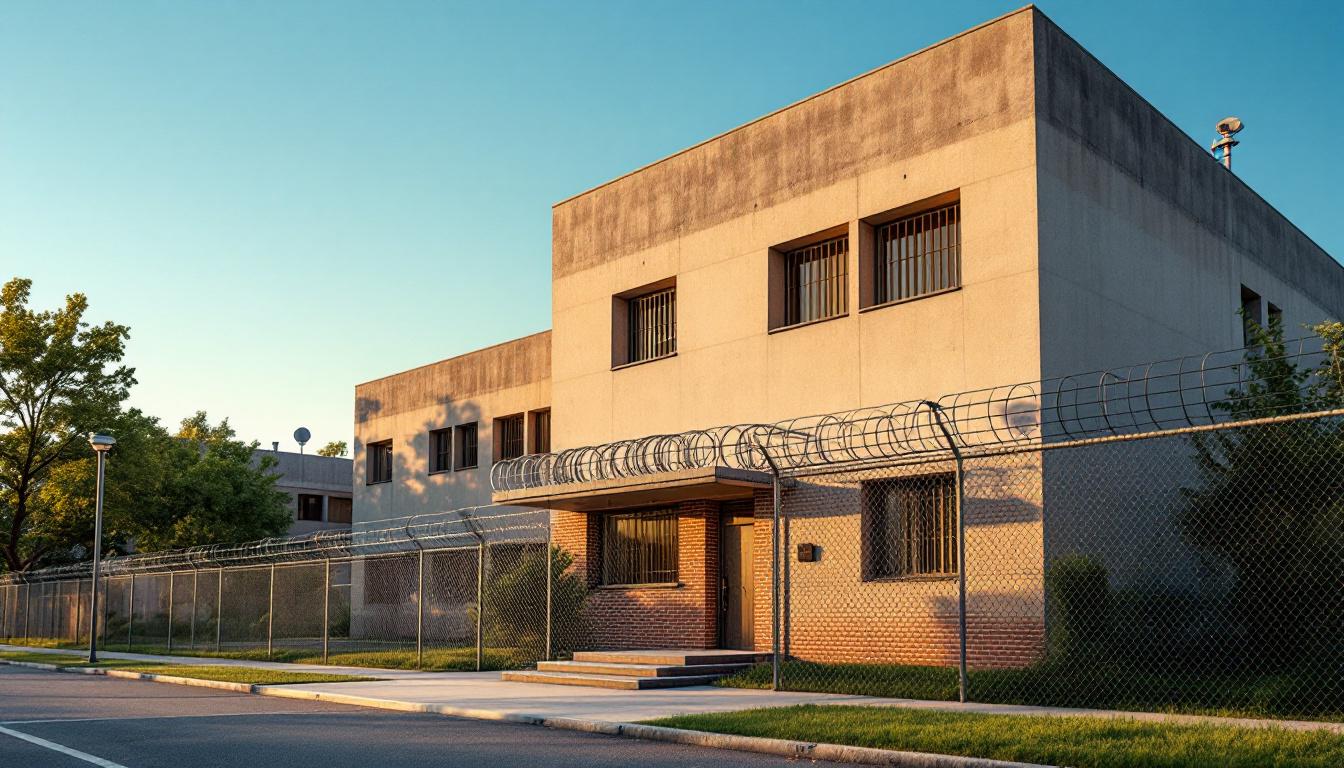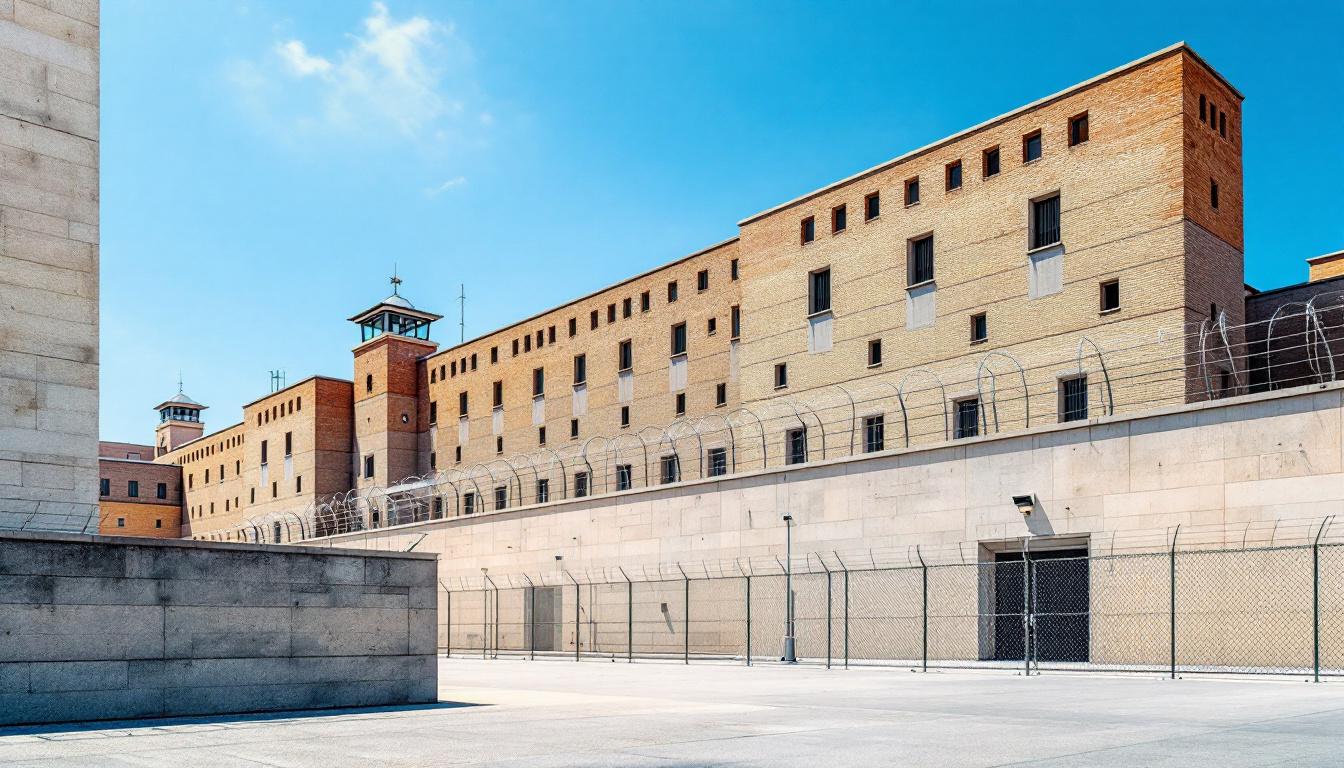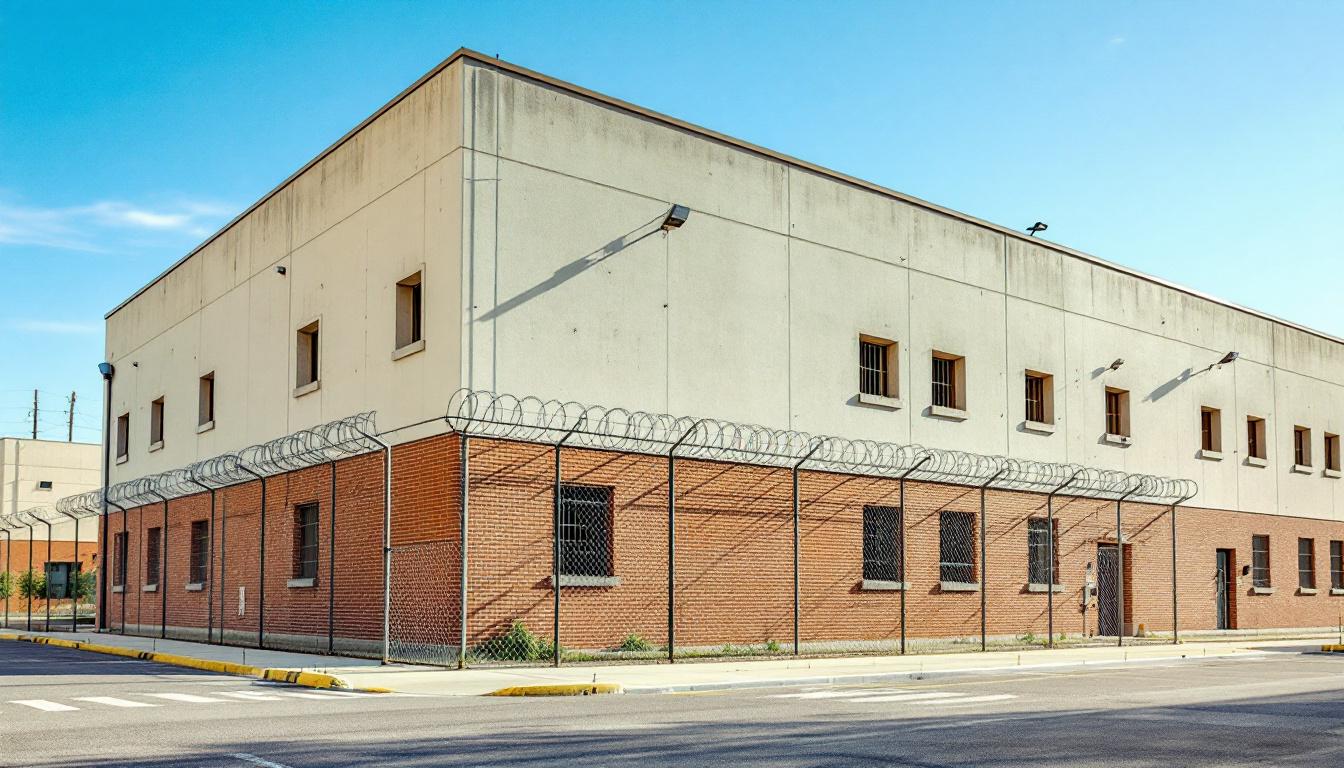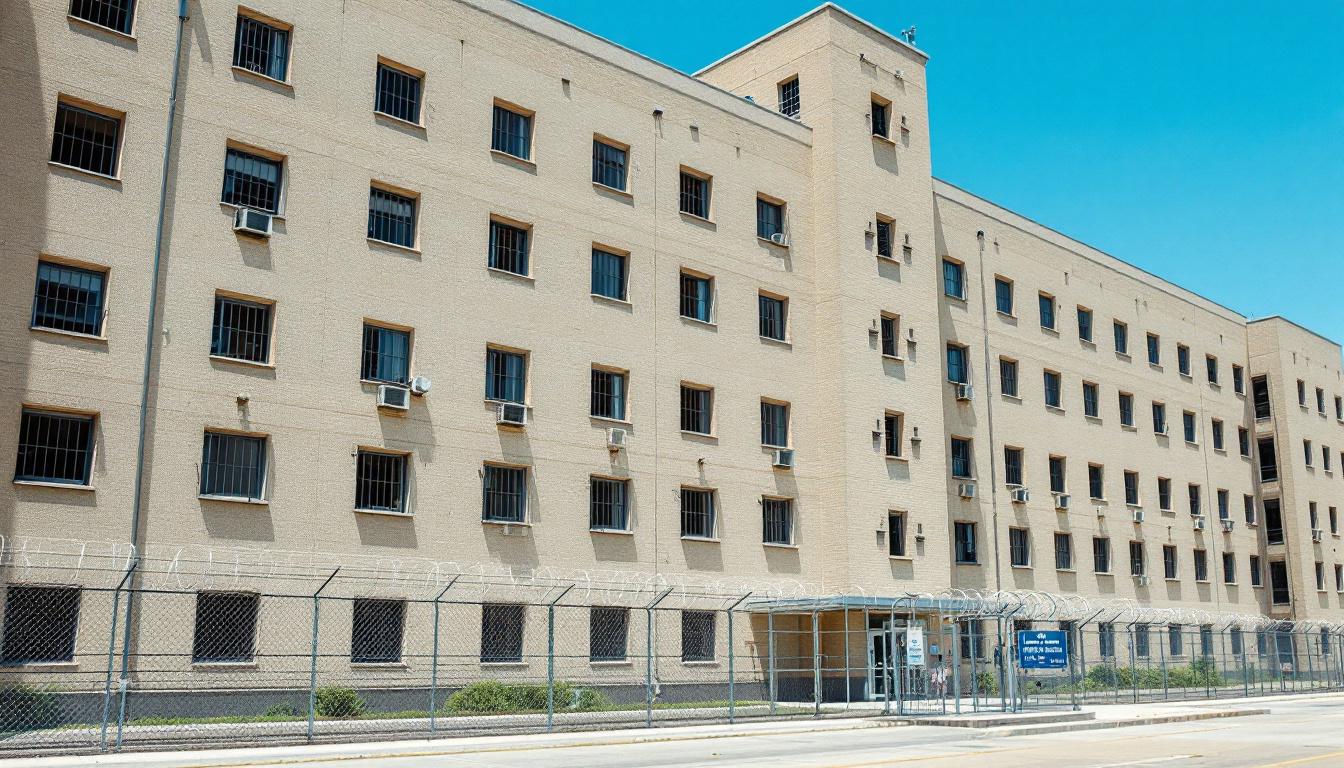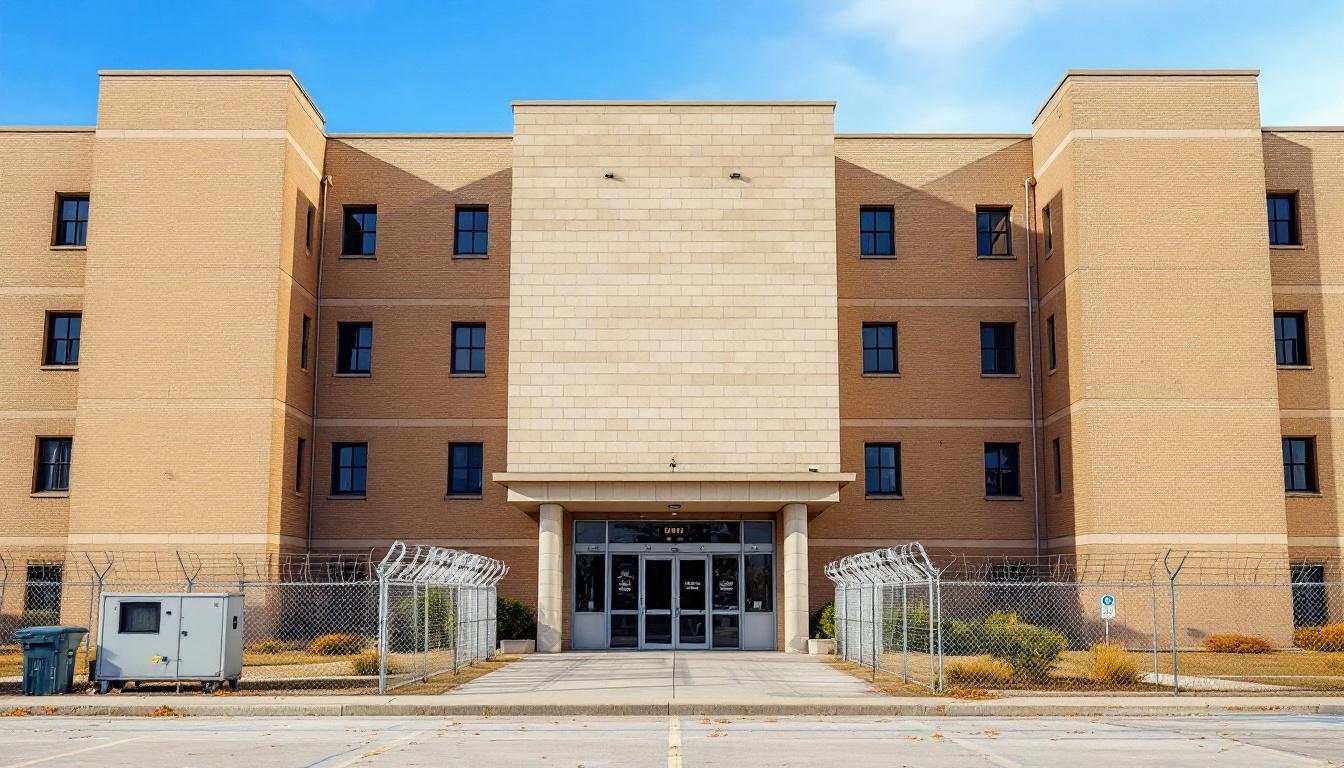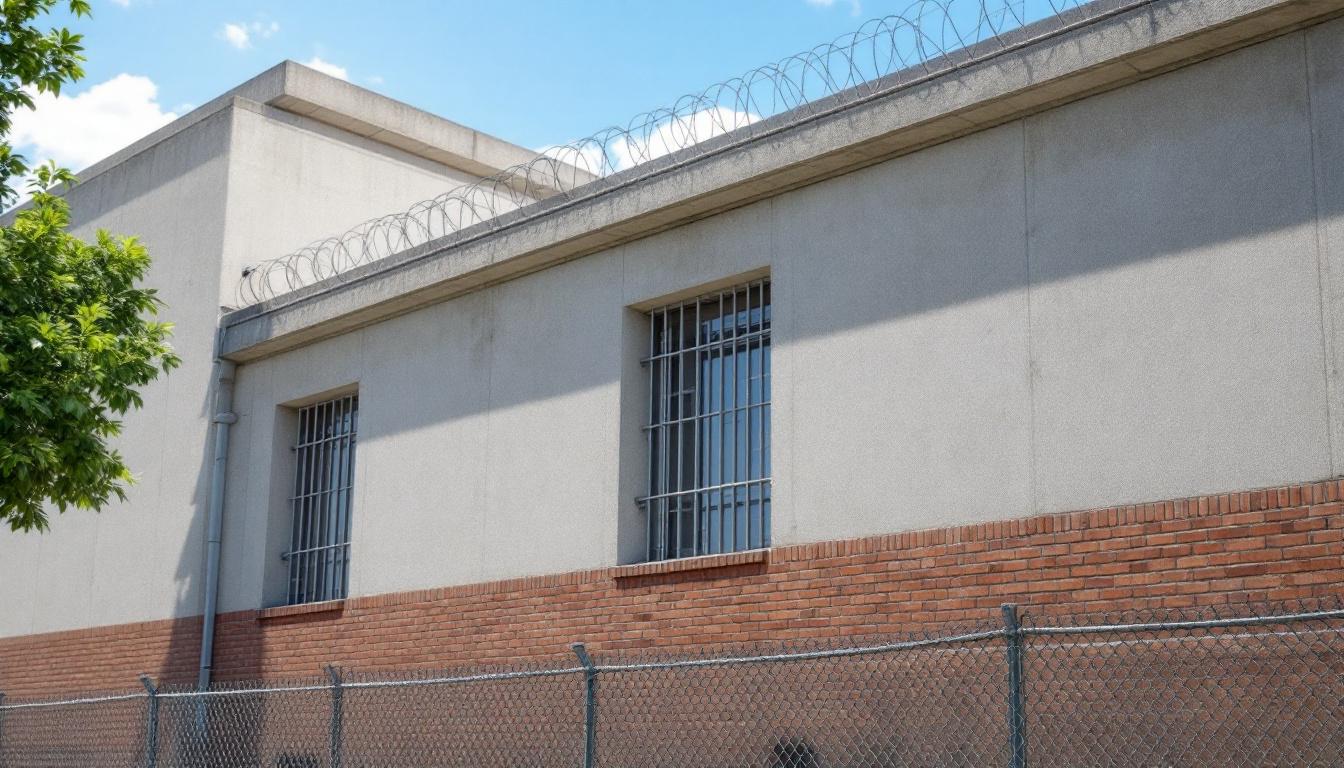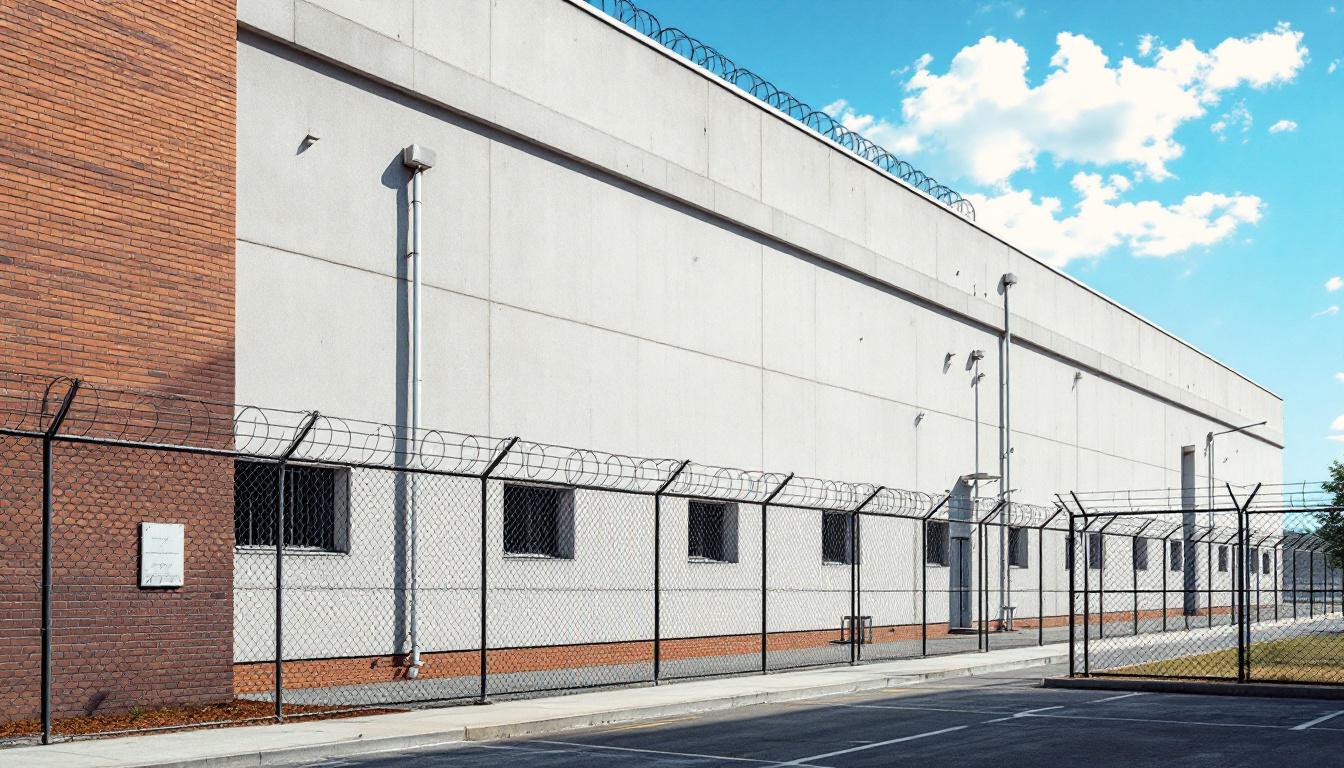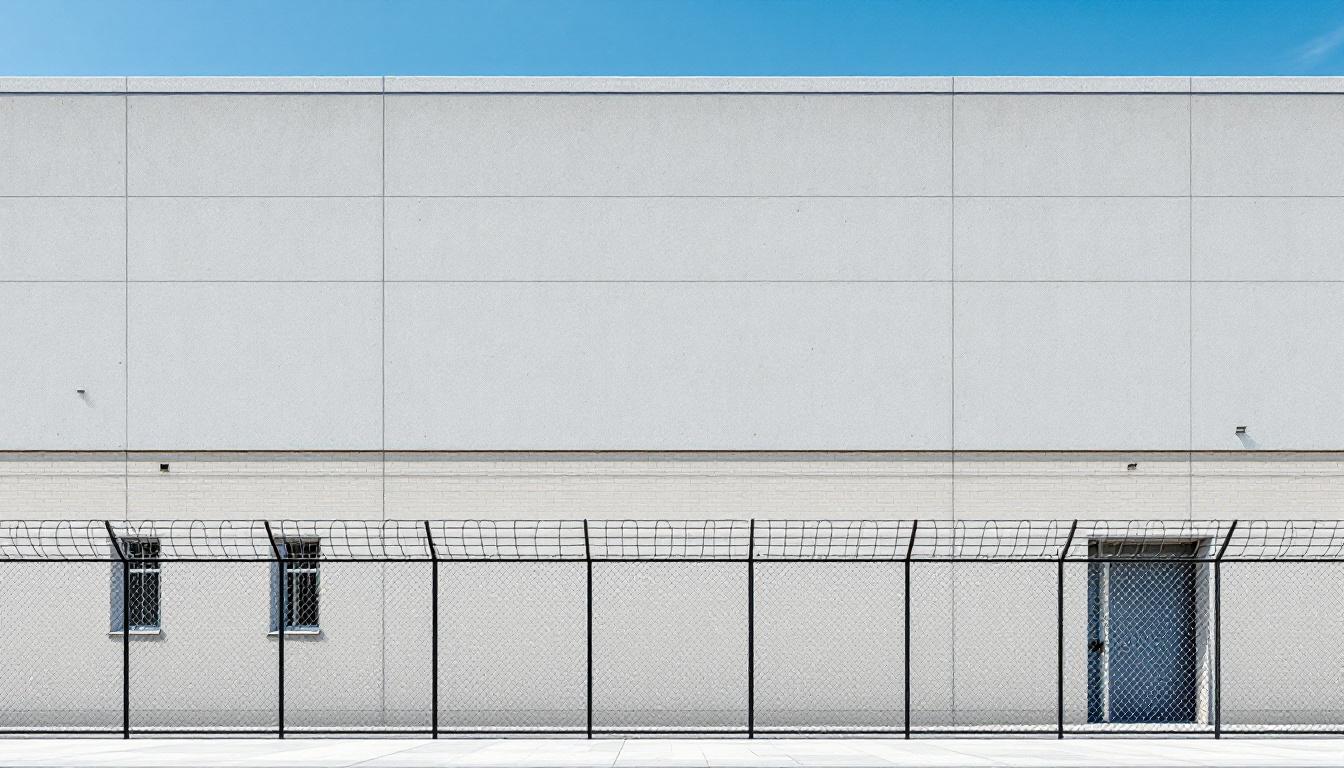
Quick Navigation
How to contact an inmate at Imperial Regional Detention Facility
This comprehensive guide will walk you through how to connect with an inmate at Imperial Regional Detention Facility. Follow the steps below to find an inmate and send letters and photos:
- Search for the inmate using our search tool below
- Create your account or log in to Penmate
- Write your message (up to 6,000 characters)
- Send instantly - inmates receive printed copies daily
Find an Inmate
Search for an inmate to start communicating today
Tip: You can search by first name, last name, or inmate ID number
To contact a person at Imperial Regional Detention Facility start by searching for the person on the official facility website. Perform a search by following these steps:
- Step 1: Enter their first name and last name into the search form and click "Search"
- Step 2: Locate their inmate record
- Step 3: Write down their Inmate ID and any housing information provided
Important! Be sure to enter the person's full name. Nicknames should not be used.
How to Send Messages to Inmates

You can use your phone or computer to send emails, letters, and photos to an inmate. Messages are sent electronically to inmate tablets or kiosks at the facility. If you would like to send a message, start by searching for an inmate at Imperial Regional Detention Facility.
Sending Photos and Postcards

A great way to send love and support to a loved one at Imperial Regional Detention Facility is to send photos and postcards. It only takes a few minutes to send photos from your phone and it makes a huge difference. You can also mail postcards with words of support and inspiration, or design your own postcard for special moments like birthdays and holidays.
Important! Be sure not to send any explicit photos or they may not be approved by the facility. You can also use a photo printing app like Penmate to make sure your photos are printed at the correct size (4x6 or 3x5) and are mailed according to the rules and regulations of Imperial Regional Detention Facility.
Frequently asked questions about Imperial Regional Detention Facility
-
How long does it take to deliver a message?
If you're sending an email message your letter is usually delivered within 24-48 hours. For messages sent via mail you should expect delivery within 3-7 days. All messages will need be approved by Imperial Regional Detention Facility.
-
How much does it cost to send a message to Imperial Regional Detention Facility?
You can send a message free using your phone or mail a message via USPS for the price of a $0.60 stamp and envelope. You can also purchase credits or e-stamps from services starting at $1.99.
-
What services can I use to contact an inmate at Imperial Regional Detention Facility?
Penmate
You can use Penmate to send letters and photos to an inmate from your phone. It's an easy way to stay in touch during your loved one's incarceration. Use the inmate locator to find an inmate's location and contact information, then you can send messages within a few minutes.
Securus messaging
Securus may be another option for communicating with an inmate at Imperial Regional Detention Facility. You can create a friends and family account and purchase credits to send messages. All messages will be reviewed and must be approved by the facility.
JPay
Some county jails and state prisons may support sending messages with JPay. You must register an account with the system, find your loved one, and purchase stamps to send messages. For some locations you can also attach photos.
Smart Jail Mail
You may also check if Smart Jail Mail is available at Imperial Regional Detention Facility. Smart Jail Mail is operated by Smart Communications and has contracted with some state and county jails. After purchasing credits, your messages and photos are sent to the facility, printed out, and then handed out to your loved one.
-
What is the mailing address of Imperial Regional Detention Facility?
Mailing address:
Imperial Regional Detention Facility
1572 Gateway Rd
Calexico, CA 92231
Phone: (760) 618-7200Business hours:
- Monday: Open 24 hours
- Tuesday: Open 24 hours
- Wednesday: Open 24 hours
- Thursday: Open 24 hours
- Friday: Open 24 hours
- Saturday: Open 24 hours
- Sunday: Open 24 hours
-
What are the visiting hours at Imperial Regional Detention Facility?
Visiting hours at Imperial Regional Detention Facility vary by housing unit and security level. Generally, visits are scheduled on weekends and holidays, with some facilities offering weekday visits. Contact the facility directly at (760) 618-7200 or check their website for the current visiting schedule. Visits typically last 30-60 minutes and must be scheduled in advance.
-
What items are prohibited when sending mail to Imperial Regional Detention Facility?
Prohibited items typically include: cash, personal checks, stamps, stickers, glitter, glue, tape, staples, paperclips, polaroid photos, musical or blank greeting cards, hardcover books, magazines with staples, and any items containing metal or electronics. Only send letters on plain white paper with blue or black ink. Photos must be printed on regular photo paper (no Polaroids). Always check with Imperial Regional Detention Facility for their specific mail policies.
-
How do I send money to an inmate at Imperial Regional Detention Facility?
You can send money to an inmate at Imperial Regional Detention Facility through several methods: 1) Online using JPay, Access Corrections, or the facility's approved vendor, 2) Money orders mailed directly to the facility with the inmate's name and ID number, 3) Kiosks located in the facility lobby, or 4) Over the phone using a credit or debit card. Fees vary by method, typically ranging from $2.95 to $11.95 per transaction.
-
Can I schedule a video visit with an inmate at Imperial Regional Detention Facility?
Many facilities now offer video visitation as an alternative to in-person visits. At Imperial Regional Detention Facility, video visits may be available through services like Penmate, Securus Video Connect, GTL, or ICSolutions. Video visits typically cost $10-20 for 20-30 minutes and must be scheduled in advance. You'll need a computer or smartphone with a camera and reliable internet connection. Contact the facility for their specific video visitation policies and approved vendors.
-
What identification do I need to visit an inmate at Imperial Regional Detention Facility?
All visitors must present valid government-issued photo identification such as a driver's license, state ID, passport, or military ID. Minors must be accompanied by a parent or legal guardian who can provide the minor's birth certificate. Some facilities require visitors to be on the inmate's approved visitation list, which may require a background check. Contact Imperial Regional Detention Facility for specific ID requirements and visitor approval procedures.
-
How can I find out an inmate's release date?
To find an inmate's release date at Imperial Regional Detention Facility, you can: 1) Use the online inmate search tool if available, 2) Call the facility's records department, 3) Contact the inmate's case manager or counselor, or 4) Have the inmate provide this information during a call or visit. For privacy reasons, some facilities only release this information to immediate family members.
Facility Overview
Contact Information
Imperial Regional Detention Facility1572 Gateway Rd
Calexico, CA 92231
Phone: (760) 618-7200
Official Website

About Imperial Regional Detention Facility
Nestled in the heart of Imperial County, El Centro serves as home to the Regional Adult Detention Facility (RADF), where community safety intersects with meaningful pathways toward personal transformation. This CA correctional facility operates as an integral component of the region’s justice system, serving residents from across the area while maintaining a steadfast commitment to both secure custody and constructive reintegration preparation.
The facility typically emphasizes comprehensive residents services that extend far beyond basic detention operations, recognizing that true public safety emerges through thoughtful rehabilitation efforts. Educational opportunities may include literacy programs, vocational training, and life skills development, while counseling services often address underlying issues that contribute to criminal behavior. Mental health support, substance abuse treatment, and family reunification programs generally form the cornerstone of the facility’s approach to preparing individuals for successful community reentry.
Through its community-centered philosophy, this detention center strives to bridge the gap between incarceration and productive citizenship, understanding that effective rehabilitation serves both the individual and the broader El Centro community. The facility’s programming typically focuses on equipping residents with practical tools and emotional resources necessary for sustainable change, while maintaining the security standards essential for public safety. This balanced approach reflects the facility’s recognition that genuine crime prevention often begins with addressing root causes and fostering personal accountability within a supportive, structured environment.
Programs & Services
Educational advancement and skill development form the cornerstone of transformative initiatives at Regional Adult Detention Facility (RADF) in California. The facility’s comprehensive approach recognizes that meaningful change occurs when residents have access to structured learning opportunities that address both immediate needs and long-term goals. Through carefully designed curricula and supportive environments, these initiatives typically focus on building foundational skills while preparing individuals for successful community reintegration.
Educational initiatives at RADF may deliver basic literacy and numeracy instruction alongside GED preparation courses that help residents complete their high school equivalency. The facility often includes computer literacy training and English as a Second Language classes to address diverse learning needs within the population. Additionally, vocational training initiatives typically provide hands-on instruction in marketable trades such as construction, automotive repair, and food service preparation. These skill-building opportunities often include certification pathways that residents can complete during their stay, giving them concrete credentials for employment upon release.
Support services and therapeutic initiatives complement the educational and vocational offerings through comprehensive rehabilitation programs designed to address underlying issues. Substance abuse counseling and anger management courses may deliver evidence-based interventions that help residents develop healthier coping strategies. Transitional planning services typically work with individuals to create realistic post-release goals, connecting them with community resources and potential employers. The facility often includes specialized workshops such as upholstery training, which provides residents with detailed craftsmanship skills while fostering patience and attention to detail that can transfer to various aspects of life and work.
Daily Life & Visitation

Structure currently forms the backbone of daily operations, with residents following established routines that continue to provide predictability throughout each day. Wake-up typically occurs in the early morning hours, followed by personal hygiene time and preparation for the day ahead. Meals are served at regular intervals in designated dining areas, where residents gather for breakfast, lunch, and dinner according to scheduled times. Count procedures occur multiple times daily to ensure all residents are accounted for, creating natural transition points between different activities and programs.
Living accommodations generally consist of shared housing units where residents are assigned based on classification levels and security considerations. Each resident typically receives basic necessities including bedding, personal hygiene items, and space for approved personal property. The commissary operates on a regular schedule, allowing residents to purchase additional items such as snacks, hygiene products, and writing materials using funds from their accounts. Additionally, residents may participate in facility work assignments that often include kitchen duties, laundry operations, maintenance tasks, and general facility upkeep, which help maintain daily operations while providing structure and purpose.
Recreational opportunities typically deliver both physical activity and social interaction through scheduled yard time, television viewing in common areas, and access to reading materials. Educational and vocational programming may be available depending on the facility’s current offerings and resident eligibility. Visitation policies generally allow family members and approved visitors to maintain contact during designated hours, while telephone access and mail correspondence provide additional communication options. While residents must adapt to the structured environment, these consistent routines and available programs help create a framework that supports daily functioning and maintains connections with the outside community.
Ready to Connect?
Start communicating with your loved one today
Search for an Inmate
